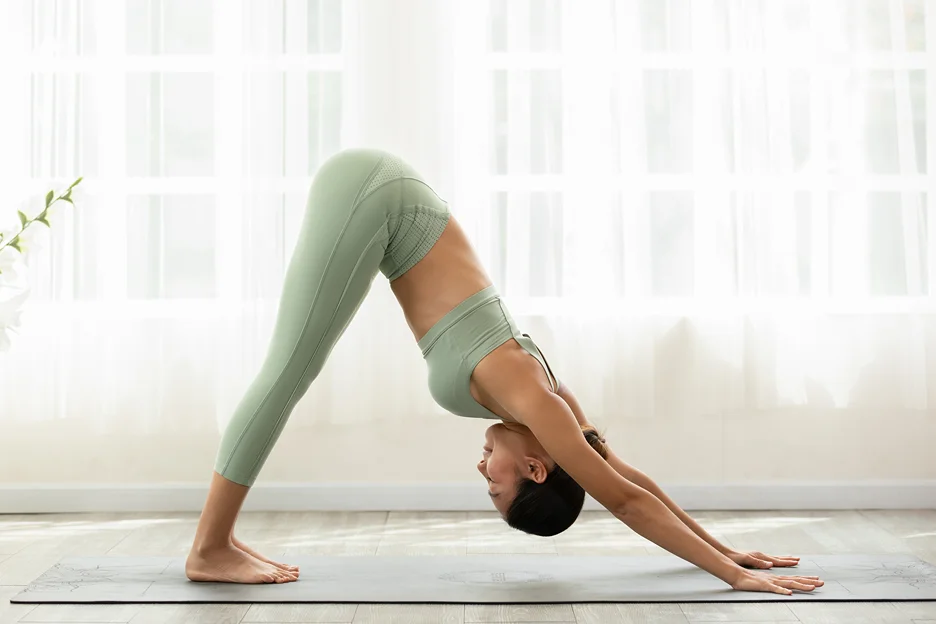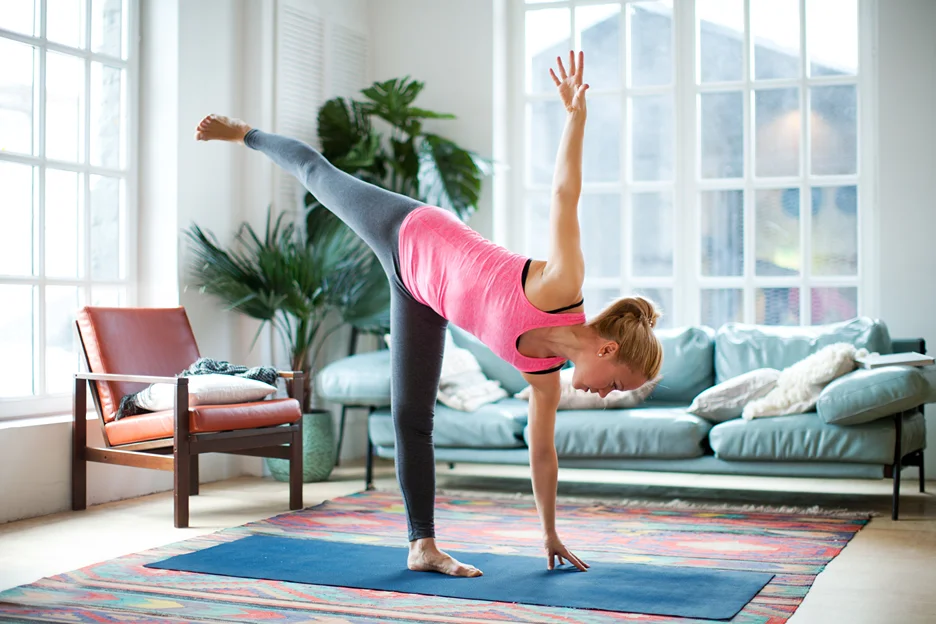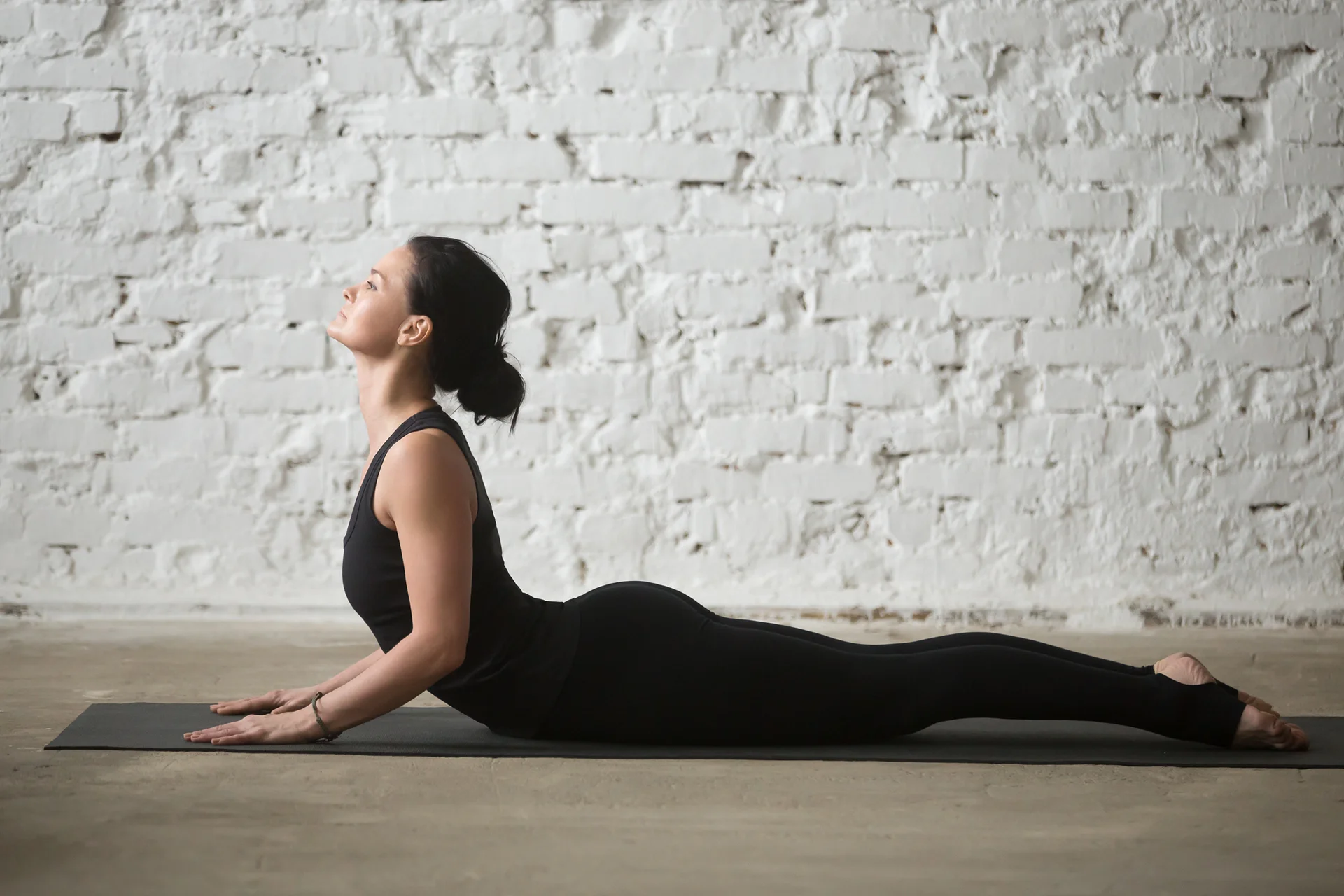Yoga Poses for Alleviating Sciatic Pain and Enhancing Well-being
If you’ve ever experienced the agony of sciatica, you know how disruptive this condition can be to daily life. But what if we told you there was a simple, natural way to find relief? A way to gently stretch and strengthen the areas causing you pain, releasing muscle tension and reducing inflammation around the sciatic nerve?
This ancient practice has been helping people find respite from sciatica for centuries. Yoga may be the answer you’ve been looking for to manage and overcome your sciatic pain!
Understanding Sciatica
The sciatic nerve is the largest and longest nerve running from the lower back down through the buttocks and legs. It branches from nerve roots originating in the lumbar spine and extends down to the feet. Sciatica occurs when compression or irritation of the sciatic nerve causes radiating pain and other symptoms.
Sciatic pain often originates from an issue with the piriformis muscle or the lumbar spine. The piriformis muscle connects the sacrum to the top of the femur bone, resting right above the sciatic nerve. If this muscle is tight or spasming, it can compress or strangle the nerve. Lumbar spinal stenosis, herniated discs, degenerative disc disease, spondylolisthesis, or a lumbar injury can all trigger sciatica by putting pressure on the nerve.
Common symptoms associated with sciatic nerve pain include:
- Radiating pain from the lower back through the hip, buttocks, back of thigh, and down the leg
- Numbness or muscle weakness in the leg or foot
- Tingling or burning sensations in the leg, foot, or toes
- Difficulty moving the leg or foot
- Constant pain that may be excruciating at times
- Sharp, shooting pain like an electric shock
While sciatica can cause excruciating pain, it is very common. Up to 40% of people will experience sciatica at some point in their lifetime. Anyone can develop sciatica, but it tends to affect people ages 30-50 years old. Understanding the anatomy involved and recognizing symptoms is key to effectively managing sciatica.
Benefits of Yoga for Sciatica
While most people turn first to traditional medical treatments, yoga provides a safe, low-impact way to manage sciatic nerve and back pain. Yoga works to improve flexibility and range of motion, relax tight muscles, improve circulation, and strengthen weak muscles. Over time, yoga can help correct muscle imbalances or postural issues that contribute to sciatica.
For those with chronic or acute sciatica, yoga can dramatically improve daily quality of life. Gentle stretches and poses can provide pain relief in the moment. A regular practice leads to long-term benefits like a reduction in the frequency and intensity of pain flare ups. Yoga offers people a sense of control over their pain and equips them with tools to manage symptoms.
Yoga provides similar benefits to traditional physical therapy, helping strengthen muscles, improve flexibility, and re-train the body’s movement patterns. Physical therapy and yoga can work hand-in-hand to promote healing. However, yoga may be more accessible and empowering for managing long-term pain. With the aid of a skilled instructor, students can develop a personalized yoga practice to address their unique needs.
Precautions Before Starting Yoga for Sciatica
While yoga can aid sciatica recovery, proper precautions should be taken before starting a new exercise regimen.
- Anyone experiencing new or worsening sciatica symptoms should consult a doctor. Discuss beginning yoga and get clearance to ensure the poses will not exacerbate any underlying medical issues.
- Choosing an experienced yoga teacher is critical, as improper poses can worsen pain. Look for teachers experienced in restorative or gentle styles of yoga. Inform them of your sciatica and any posed restrictions. Avoid classes marked as “flow,” “hot yoga,” or “power yoga.”
- Build a practice slowly by first trying restorative poses. Focus on relaxation, gentle stretches, and easy movements. Progress gradually to more challenging poses like twists or backbends. Always listen to your body and come out of any pose causing sciatic or back pain. Props like yoga blocks and straps allow you to support the body and avoid overexertion.
With the proper precautions, a consistent yoga practice can be integrated safely over time. Patience and compassion for your body’s abilities is key when managing chronic pain like sciatica.
Yoga Poses for Sciatica Relief

Below are descriptions of beginner-friendly yoga poses that can provide sciatica relief when practiced gently and with care. Hold poses for 30-60 seconds, taking 5-8 slow breaths. Come out of any pose causing pain or discomfort.
Child’s Pose
This resting pose gently stretches the hips, thighs, and ankles while releasing tension in the low back. From kneeling, sit back onto the heels and fold forward to rest the chest on the thighs. Reach arms extended straight out or rest them by your side whichever is more comfortable.
Downward Facing Dog
A gentle inversion that stretches the hamstrings and calves while engaging the core and upper body. Start on hands and knees, set knees hip-width apart and wrists under shoulders. On an exhale, tuck toes under and lift knees away from the floor pushing hips toward the ceiling.
Half Moon Pose
This pose laterally stretches the spine and opens the hips and chest. From standing, shift weight onto your left leg, lifting your right leg off the floor behind you. Extend right arm straight up and left arm out parallel to the ground. Work up to very gentle twisting by turning your head and chest slightly right.
Knees to Chest
This gentle stretch compresses the low back while stretching the sciatic nerve through the back of the hip. Lie on back, hug right knee into chest, holding shin. For a deeper stretch straighten right leg, flexing foot, and hug thigh into chest. Switch sides.
Cobra Pose
Stretches through the front hips and torso while gently arching the lower back. From prone, place palms by chest and elbows close to body pointing backward. On an inhale press into hands to lift the chest off the floor, rolling shoulders down and back.
Cat-Cow Pose
Gently mobilizes the spine and stretches the torso. Come to the tabletop position on hands and knees. As you inhale, drop belly toward floor and lift chest up into a backbend (cow pose). Exhale press into hands round back up toward ceiling (cat pose). Repeat 5-10 times flowing between the poses.
Bridge Pose
Strengthens the glutes, opens the chest, and gently mobilizes the spine. From lying on back, bend knees and set feet hip-width apart on the floor. Pressing into feet, lift hips toward ceiling. Clasp hands under hips and lift chest toward chin.
Yin Yoga Poses
To target connective tissue and achieve a deep stretch, hold yin poses 2-5 minutes.
Dragon Pose
A deep hip opener and stretch for the piriformis muscle. From lying on back, cross right ankle over left thigh, threading right hand through the hole between the legs to clasp left thigh. Gently pull the left leg toward the chest. Switch sides.
Sphinx Pose
A mild backbend that stretches the lumbar spine and core. From prone, prop up on forearms with elbows under shoulders. Press hips and thighs into the floor and lift the chest off the floor. Drop head back gently.
Mountain Pose
A standing pose that improves posture, engagement, and alignment. Stand with feet together or hip-width apart, toes facing forward. Lift toes, press them down, and balance weight evenly across soles of feet. Engage leg muscles. Bring arms down alongside the body with shoulders back. Look straight ahead.
Crocodile Pose
A restful pose that stretches the lower back. Lie on the stomach with arms bent and palms facing up near the chest. Turn your head to one side and rest on your forehead. Allow back muscles to relax. Can place pillows under hips/thighs to take pressure off low back.
Advanced Yoga Poses
Once you’ve built a foundation with gentle poses, explore incorporating some of these challenging poses to achieve new ranges of motion and relief. Always move slowly and come out of any pose causing pain.
| Pose | Description |
| King Pigeon Pose | An intense hip opener targeting the piriformis and sciatic nerve. From down the dog split right leg back in a lunge. Place the right shin parallel to the front edge of the mat with the right ankle near the left wrist. Gently lower hips toward floor while keeping back leg straight. Hold 30-60 secs. Switch sides. |
| Table Top with Supported Reclined Pigeon | This pose provides a deep stretch through the hips and a gentle backbend. Lie on your back, bring right ankle over left thigh and draw left knee into chest. Maintain flexion in the right ankle. For support, place a bolster or pillow under your right hip. Hold for 30-60 seconds, then switch sides. |
| Camel Pose | An intense backbend targeting the upper and lower back. From kneeling, place hands on lower back with fingers pointing down. On an inhale, slowly arch back and lift your chest up and out. Only go to your comfortable range of motion. Avoid this pose if you have spine injuries. |
Practical Tips for Starting a Yoga Practice
Implementing some practical tips can help you get the most out of yoga for sciatica without causing further pain. This includes:
- Using a non-slip yoga mat for proper grip and padding during floor poses.
- Taking deep breaths in and out of poses to release muscle tension.
- Maintaining a neutral spine by avoiding excessive arching or rounding.
- Holding poses for 30-60 seconds to allow muscles to release.
- Incorporate hamstring stretches to prevent tightness causing low back strain.
- Ensure proper form by lifting the chest and lengthening the spine in poses. Do not collapse into low back.
- Start with 10-15 minutes daily to avoid overexertion when beginning. Slowly increase practice time.
- Use props like yoga blocks, straps, and bolsters to help support and maintain poses.
- Listen to your entire body and come out of any pose that exacerbates sciatic pain. A mix of stretching, strengthening, and resting poses will provide the most relief.
Additional Exercises and Stretches
Along with yoga, try incorporating some of these exercises into your routine 2-3 times a week to build strength and flexibility.
| Exercise | Description |
| Glute Activation Exercises | Weak glutes can contribute to sciatica, so focus on activating and strengthening these muscles. Try bridges, clamshells, hip abductions, and single leg balances like tree pose. |
| Water Exercises | The buoyancy of water reduces impact on the spine and sciatic nerve while providing gentle resistance. Try swimming, water walking, or aquatic therapy. |
| Low Impact Cardio | Brisk walking, elliptical, stationary cycling, and recumbent stepper machines are great low-impact options. Avoid running, jumping, and high-impact activities. |
| Stretching | Be sure to also stretch the hamstrings, hips, and calves which commonly contribute to sciatic and low back pain when tight. |
When to Seek Medical Treatment
While yoga can aid sciatica recovery, it should complement, not replace, medical treatment if necessary. See a doctor promptly if you experience:
- Sudden onset of sciatica
- Sciatica that does not improve within 1-2 weeks
- Worsening or severe pain
- Numbness, tingling, or weakness in the leg
- Bowel or bladder changes
- Fever or signs of infection
A doctor can review your medical history, conduct imaging tests, and prescribe medication to reduce inflammation and pain. If conservative treatments fail, surgery or injections like epidural steroid shots may provide relief.
Additionally, work with a physical therapist or specialist in manual therapy techniques like massage, acupuncture, and spinal manipulation. Many find these hands-on approaches provide immense pain relief. A multi-disciplinary approach alongside a consistent yoga practice often yields the best outcomes.
Conclusion

Sciatica can be extremely painful and debilitating. However, implementing a mindful yoga practice alongside medical treatment can aid the recovery process and help manage symptoms over the long-term. Yoga improves flexibility, relaxes tight muscles, and strengthens weak areas. Over time, integrating appropriate poses and stretches leads to reduced pain frequency and intensity. Work with knowledgeable professionals to build a personalized yoga regimen that will enhance your comfort, function, and overall well being.
Use Kaly to Find the Best Yoga Specialists for Sciatica Near You
At Kaly, you can connect with knowledgeable yoga teachers and physical therapists who specialize in sciatica pain management. Schedule a consultation to get personalized advice on yoga poses and sequences that can alleviate your sciatic discomfort.
Take control of your sciatica through the healing power of yoga – book your appointment on Kaly today. Focus on long-term wellbeing with the guidance of experienced professionals dedicated to your recovery.
